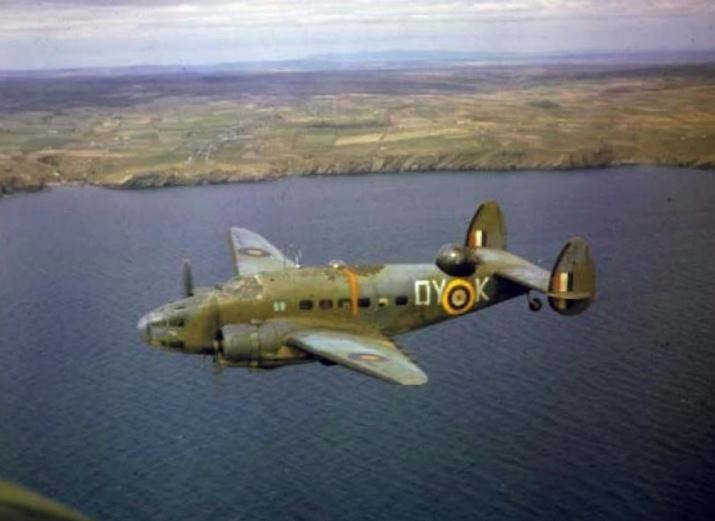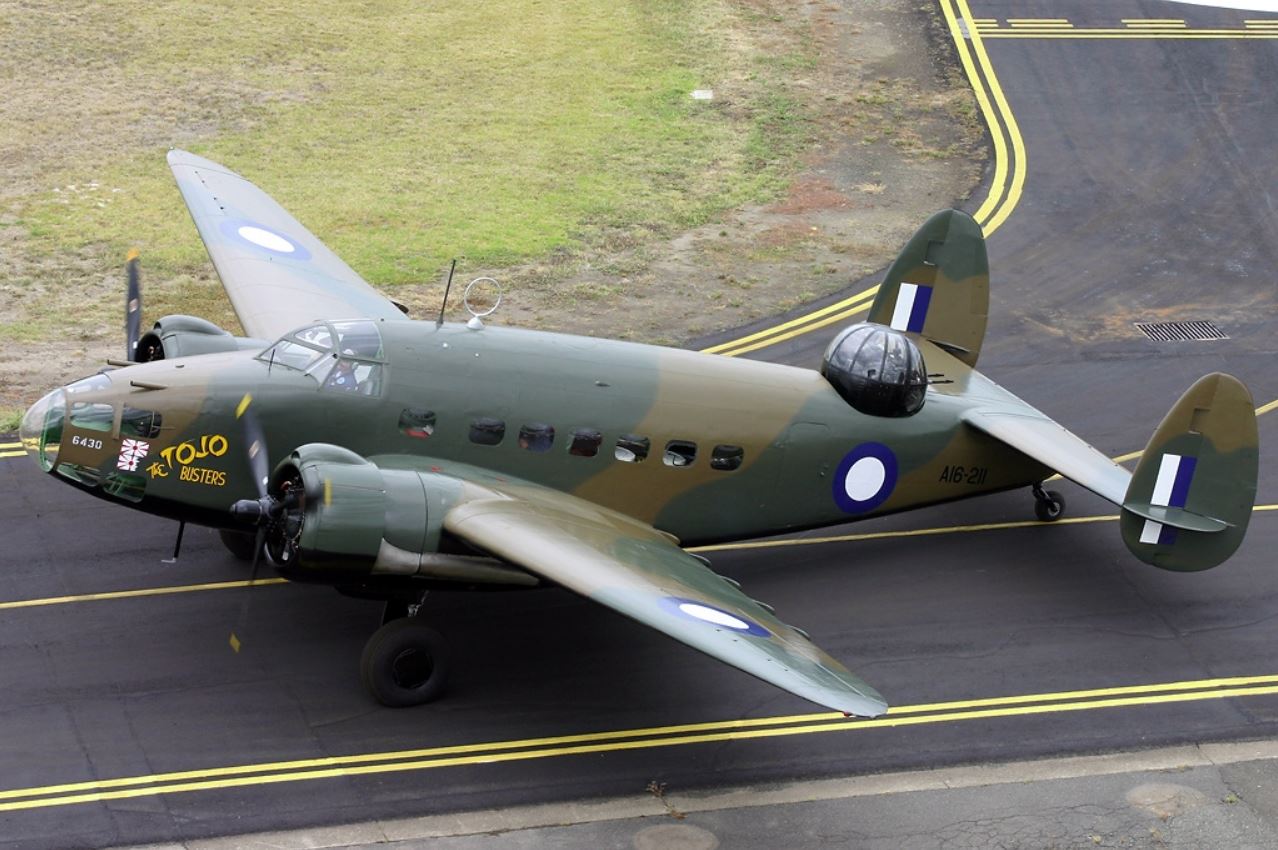Difference between revisions of "Lockheed Hudson"
From Our Contribution
(Created page with "{{infobox aircraft | image = File:Lockhead_Hudson.jpg | caption = | image2 = File:Lockhead_Hudson_A16-112_at_Point_Cook.jpg.jpg | caption2...") |
(→Ground Crew) |
||
| (12 intermediate revisions by the same user not shown) | |||
| Line 1: | Line 1: | ||
{{infobox aircraft | {{infobox aircraft | ||
| image = [[File:Lockhead_Hudson.jpg]] | | image = [[File:Lockhead_Hudson.jpg]] | ||
| − | | caption = | + | | caption = No. 48 RAF Squadron Hudson in early 1942 |
| image2 = [[File:Lockhead_Hudson_A16-112_at_Point_Cook.jpg.jpg]] | | image2 = [[File:Lockhead_Hudson_A16-112_at_Point_Cook.jpg.jpg]] | ||
| − | | caption2 = A16-112 at Point Cook | + | | caption2 = A16-112 at Point Cook 2008 |
| aircrafttype = | | aircrafttype = | ||
| aircraftrole = bomber, transport, reconnaissance, maritime patrols | | aircraftrole = bomber, transport, reconnaissance, maritime patrols | ||
| Line 16: | Line 16: | ||
==Remarks== | ==Remarks== | ||
| + | The Lockheed Hudson was an American built light bomber and coastal reconnaissance aircraft. Built initially for the Royal Air Force shortly before the outbreak of the Second World it was later used by the US, Canadian and Australian Air Forces. The British Purchasing Commission ordered 200 aircraft for use by the Royal Air Force and the first aircraft started flight trials on 10 Dec 1938. With no major issues, deliveries to the RAF began on 15 Feb 1939. | ||
| + | The Hudson served throughout the war, mainly with Coastal Command but also in transport and training roles. A Royal Australian Air Force (RAAF) Hudson was involved in the Canberra air disaster of 1940, in which three ministers of the Australian government were killed. Following Japanese attacks on Malaya, Hudsons from No. 1 Squadron RAAF became the first Allied aircraft to make an attack in the Pacific War, sinking a Japanese transport ship, the Awazisan Maru, off Kota Bharu at 0118h local time, an hour before the attack on Pearl Harbor. | ||
==General characteristics== | ==General characteristics== | ||
| − | *Crew: | + | *Crew: Five |
| − | *Length: | + | *Length: 13.51 m |
| − | *Wingspan: | + | *Wingspan: 19.96 m |
| − | *Height: | + | *Height: 3.61 m |
| − | *Empty weight: | + | *Empty weight: 5,275 kg |
| − | *Max takeoff weight: | + | *Max takeoff weight: 7,938 kg |
| − | *Powerplant: | + | *Powerplant: 2 x Wright ( cylinder radial engines 1,100hp each |
| − | *Maximum speed: | + | *Maximum speed: 396 km/h at 2,000 m |
| − | *Range: | + | *Range: 3,150 km |
| − | *Service ceiling: | + | *Service ceiling: 7,600 m |
*Armament | *Armament | ||
| − | *Guns: | + | *Guns: 2 x .303 in Browning machine guns in dorsal turret, 2 x .303 in Browning machine guns in nose |
| − | *Bombs: | + | *Bombs: 640 kg - bombs or depth charges |
| − | == | + | ==Aircrew== |
| + | ===[[No. 1 Operational Training Unit RAAF]]=== | ||
| + | *† [[Frank Keith Morcombe DFC]] Navigator 17 Dec 1941 - 20 Jan 1942 | ||
| − | [[ | + | ==Ground Crew== |
| + | |||
| + | ===[[No. 13 (City of Darwin) Squadron RAAF]]=== | ||
| + | *[[Edward Arthur Ross]] 6 Jul 1940 - 23 Jul 1941 | ||
| + | |||
| + | [[Category:Aircraft]] | ||
Latest revision as of 22:18, 12 November 2023
Contents
Remarks
The Lockheed Hudson was an American built light bomber and coastal reconnaissance aircraft. Built initially for the Royal Air Force shortly before the outbreak of the Second World it was later used by the US, Canadian and Australian Air Forces. The British Purchasing Commission ordered 200 aircraft for use by the Royal Air Force and the first aircraft started flight trials on 10 Dec 1938. With no major issues, deliveries to the RAF began on 15 Feb 1939.
The Hudson served throughout the war, mainly with Coastal Command but also in transport and training roles. A Royal Australian Air Force (RAAF) Hudson was involved in the Canberra air disaster of 1940, in which three ministers of the Australian government were killed. Following Japanese attacks on Malaya, Hudsons from No. 1 Squadron RAAF became the first Allied aircraft to make an attack in the Pacific War, sinking a Japanese transport ship, the Awazisan Maru, off Kota Bharu at 0118h local time, an hour before the attack on Pearl Harbor.
General characteristics
- Crew: Five
- Length: 13.51 m
- Wingspan: 19.96 m
- Height: 3.61 m
- Empty weight: 5,275 kg
- Max takeoff weight: 7,938 kg
- Powerplant: 2 x Wright ( cylinder radial engines 1,100hp each
- Maximum speed: 396 km/h at 2,000 m
- Range: 3,150 km
- Service ceiling: 7,600 m
- Armament
- Guns: 2 x .303 in Browning machine guns in dorsal turret, 2 x .303 in Browning machine guns in nose
- Bombs: 640 kg - bombs or depth charges
Aircrew
No. 1 Operational Training Unit RAAF
- † Frank Keith Morcombe DFC Navigator 17 Dec 1941 - 20 Jan 1942
Ground Crew
No. 13 (City of Darwin) Squadron RAAF
- Edward Arthur Ross 6 Jul 1940 - 23 Jul 1941

